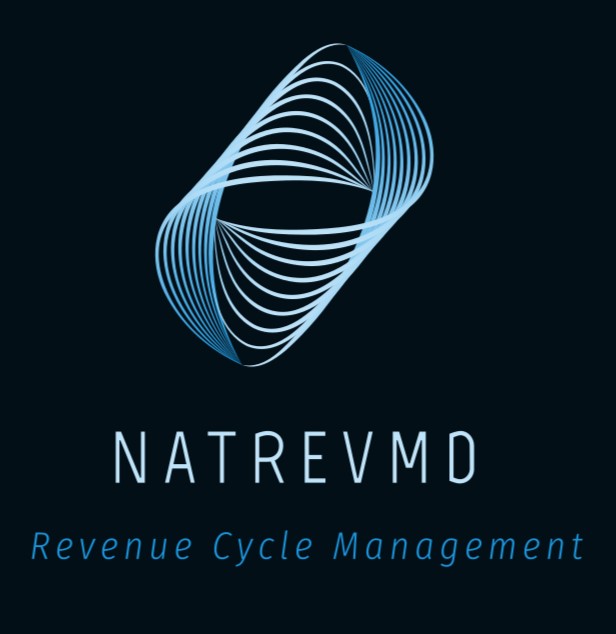Introduction
If you run a growing OB/GYN practice, your billing process may be holding you back more than you think. Women’s health providers face unique challenges with global obstetric billing, in-office procedures, pregnancy transfers, and modifier usage. Even small coding errors or missed steps can lead to claim denials, compliance risks, and lost revenue.
At NatRevMD, we specialize in OB/GYN medical billing services for practices with 3+ providers or monthly collections over $150,000. We’ve helped dozens of OB/GYN clinics increase revenue by 25% or more within months, simply by cleaning up their billing.
Here are the top five OB/GYN billing mistakes we see every day—and how to fix them.
1. Incorrect Billing for Pregnancy Transfers
Keyword Targets:
- OB/GYN billing for pregnancy transfers
- Partial obstetric care billing
- Global OB billing codes
When a patient transfers into or out of care mid-pregnancy, the standard global OB package (e.g., CPT 59400 or 59510) no longer applies. Unfortunately, many practices forget to adjust their billing.
Common Issues:
- Billing full global codes when only partial care was provided
- Missing start/stop dates and prenatal visit counts
- Lack of documentation or transfer letters
Correct Approach:
- Use CPT 59425 (4–6 visits) or 59426 (7+ visits) for partial care
- Document the number of visits and transfer of care date
- Do not bill global OB codes unless your practice provided all prenatal, delivery, and postpartum care
2. Improper E/M Billing During Routine OB Visits
Keyword Targets:
- OB/GYN E/M coding
- Billing E/M with OB visit
- Modifier 25 for OB billing
Can you bill a 99213 or 99214 during a routine prenatal visit? Only if you evaluate and manage a separately identifiable problem (e.g., UTI, bleeding, depression).
Common Issues:
- Missing modifier -25
- No separate documentation for the E/M
- No medical necessity noted
How to Bill Correctly:
- Ensure documentation clearly separates OB care from problem visit
- Use modifier -25 to avoid denials
- Match ICD-10 codes accurately (e.g., Z34.01 for OB + N39.0 for UTI)
3. Failing to Use Modifiers with In-Office Procedures
Keyword Targets:
- OB/GYN billing modifiers
- Modifier 25 for same-day procedures
- Coding procedures during OB visits
Many OB/GYN visits include in-office procedures—colposcopies, IUD insertions, biopsies, etc. Billing an E/M on the same day as a procedure requires precision.
Common Issues:
- Forgetting modifier -25 on the E/M
- Missing modifier -59 or -51 for multiple procedures
- Incorrect diagnosis linking
Best Practices:
- Add modifier -25 to the E/M when medically necessary
- Use modifier -59 for distinct procedural services when appropriate
- Ensure each CPT code is tied to the correct diagnosis
4. Underbilling In-Office Procedures and Device Insertions
Keyword Targets:
- OB/GYN procedure billing
- Nexplanon insertion billing
- Endometrial biopsy CPT code
Too often, OB/GYN offices fail to charge for minor procedures or miss revenue from device placements (e.g., Nexplanon, IUDs).
Common Issues:
- No supply/device code billed (e.g., J7307 for Nexplanon)
- Missed combination billing (e.g., 11981 for insertion + device code)
- Documentation missing CPT-specific language
How to Improve:
- Use a charge capture checklist for every visit
- Train staff on procedure codes and proper documentation
- Reconcile procedures monthly to catch missed revenue
5. Billing for Postpartum Care Not Performed
Keyword Targets:
- Postpartum visit billing
- OB global package rules
- OB/GYN coding best practices
The global OB code includes routine postpartum care, but only if it occurs. If patients don’t return, you shouldn’t bill for it.
Common Issues:
- Billing postpartum care by default
- No system to track postpartum completion
- Missed E/M billing opportunity if care is outside the global period
Solutions:
- Track delivery dates and confirm postpartum attendance
- If patient doesn’t return, consider billing partial OB codes
- Clearly document any postpartum complications for separate E/M billing
6. Incomplete or Poor Documentation That Fails Post-Payment Review
Keyword Targets:
- OB/GYN documentation requirements
- Medical necessity in OB/GYN billing
- Denials after medical record requests
Your billing may be correct—but if your documentation doesn’t support it, you could still lose the revenue.
Insurers increasingly request medical records after payment to validate services. If documentation doesn’t meet payer standards for medical necessity, procedures and visits are often denied or recouped—even if they were medically appropriate.
Common Issues:
- No clear history, assessment, or plan for billed E/M visits
- Procedure notes lacking required elements (e.g., consent, findings, complications)
- Global OB notes missing detail on visit count, trimester, or transfer dates
- Documentation that doesn’t justify a modifier -25 or -59 usage
Why It Matters:
When a payer requests records, it’s not enough to have billed correctly—you must prove the care was necessary and documented according to CPT and payer guidelines.
Recoupments can be thousands of dollars—and they hurt even more months after you’ve counted the revenue.
How to Fix It:
- Conduct regular internal audits of documentation vs billing
- Educate providers on documenting medical necessity and procedure-specific details
- Use templated note structures (smart phrases/macros) that still allow customization
- Ensure global OB tracking includes exact visit counts, delivery dates, and postpartum care
Why Choose NatRevMD for OB/GYN Medical Billing?
Keyword Targets:
- OB/GYN billing company
- OB/GYN revenue cycle management
- Best medical billing company for OB/GYN
At NatRevMD, we provide expert revenue cycle management for OB/GYN practices. Our certified OB coders and experienced account managers understand every nuance of women’s health billing, including:
- Global OB packages and exceptions
- Modifier logic and payer-specific rules
- Denial management and appeals
- Transparent reporting and dashboards
- Front-desk and provider documentation training
We don’t just process claims—we optimize every part of your revenue cycle.
Ready to Increase OB/GYN Collections?
📞 Schedule a call with NatRevMD
Visit NatRevMD.com to learn more.





